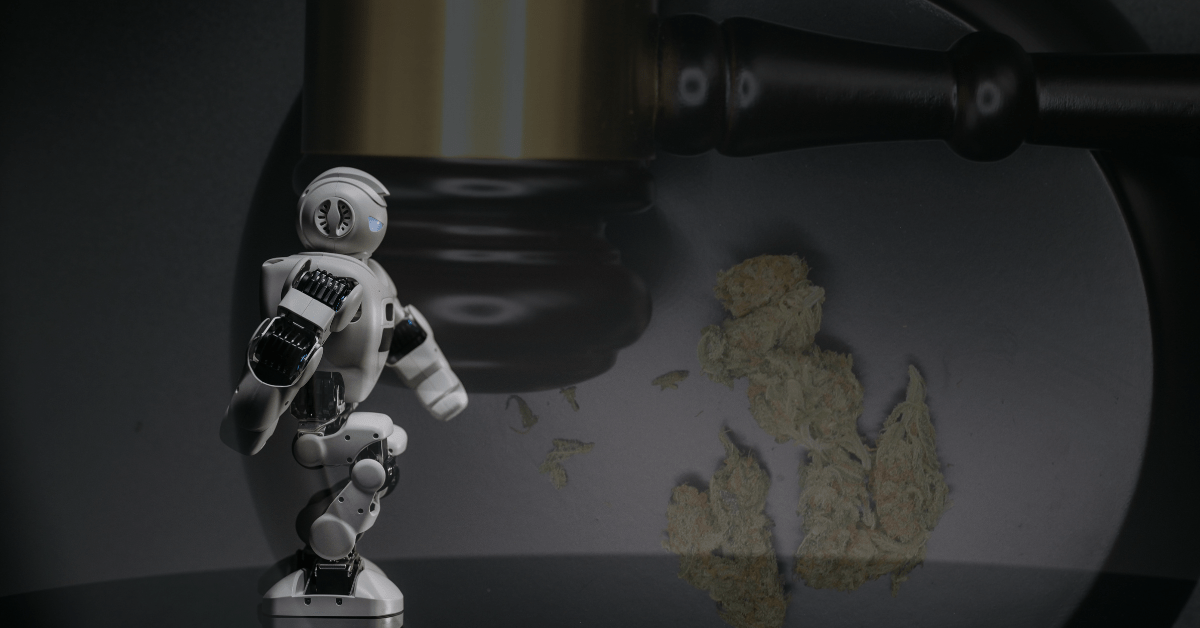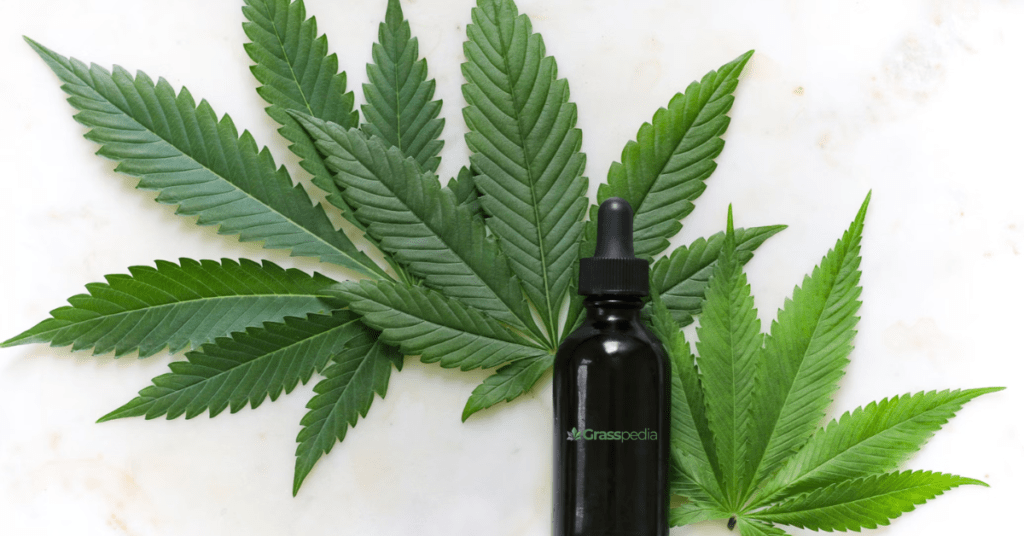We know all about the ancient medicines and modern dispensaries, but cannabis has come a long way. And the real game-changer is here: AI in cannabis cultivation.
As legalization spreads and competition intensifies, cannabis growers are turning to Artificial Intelligence and Big Data to grow smarter, greener, and more profitable crops. We’re entering an era where algorithms might just have greener thumbs than humans.
It was only a matter of time before AI entered the cannabis industry. Let’s look into how AI and data are transforming cannabis cultivation, and what it means for the future of the industry.
Why Cannabis Needs AI Now More Than Ever
Yes, the cannabis industry is booming, but it’s also complex and heavily regulated. You’ve got to optimize the growing conditions, ensure compliance, and so much more. Cannabis cultivators face challenges that can make or break their business.
And cutting through all the noise, one solution stands tall: Artificial Intelligence.
AI in cannabis helps solve some of the industry’s biggest pain points:
- Maximizing yield with precision growing
- Predicting plant diseases before they strike
- Maintaining compliance via automated tracking
- Reducing operational costs and resource waste
- Improving product consistency, which is a must for medical-grade cannabis
As per research, the global legal cannabis market is projected to reach $73.6 billion by 2027. So, businesses will have to depend on AI in one way or the other.
How AI Works in Cannabis Cultivation
AI thrives on data, and in cannabis farms, there’s plenty of it: soil quality, humidity, light levels, nutrient schedules, harvest timing, and much more. AI systems analyze this data to optimize every stage of the growth process.
Here’s how:
1. Environmental monitoring
Cannabis grow rooms function as controlled ecosystems where even minor fluctuations in light, temperature, humidity, or airflow can jeopardize an entire harvest.
Traditionally, cultivators have relied on manual checks or basic timers to maintain conditions, but these methods are reactive and leave room for error.
With the introduction of AI in cannabis cultivation, growers can now deploy AI-powered sensors that continuously track environmental variables in real-time. These sensors feed data into machine learning algorithms that monitor and predict the optimal environmental settings for different cannabis strains.
As the system collects more data, it becomes smarter, enabling proactive, data-backed adjustments. This level of precision improves plant health, boosts cannabinoid and terpene profiles, and reduces resource waste.
Here’s how AI transforms environmental monitoring in cannabis cultivation:
- Real-time tracking of temperature, humidity, CO₂ levels, light intensity, and air circulation.
- Use of predictive algorithms to identify the ideal environmental conditions for each cannabis strain.
- Automated adjustments to HVAC, lighting systems, irrigation, and nutrient dosing.
- Early detection of anomalies or stress signals to prevent crop damage.
- Optimization of resource usage, leading to cost savings and sustainability.
Example: Agrify, a vertical farming tech company, offers AI-powered cannabis cultivation solutions that track over 1.5 million data points per harvest cycle.
2. Precision growing & yield optimization
When it comes to cannabis cultivation, no two plants are identical. Even under similar conditions, some thrive while others lag behind. This is where AI in cannabis steps in and changes the game entirely.
By using advanced computer vision, sensors, and deep learning algorithms, AI can closely monitor every individual plant. It analyzes thousands of data points, ranging from color and leaf shape to moisture levels and growth rate, often catching early warning signs of problems before a grower even notices.
With this insight, growers can deliver hyper-personalized care, adjusting nutrients, watering, or light exposure on a plant-by-plant basis, rather than relying on broad assumptions.
Here’s how AI makes precision growing possible:
- Early detection of issues: AI can spot nutrient deficiencies, pest infestations, or disease symptoms far earlier than the naked eye, giving growers a head start on treatment.
- Plant health monitoring: Through cameras and sensors, AI tracks how each plant is responding to environmental factors like light intensity, temperature, and humidity.
- Tailored nutrient delivery: AI systems can automate fertigation (fertilizer + irrigation), ensuring each plant gets exactly what it needs.
- Predictive analytics for yield optimization: By studying past harvests and current growth patterns, AI can forecast yields and guide growers on how to boost output efficiently.
- Resource efficiency: Because you’re not overwatering, overfeeding, or overlighting, you save money and reduce waste, while getting higher-quality cannabis.
Case in point: Grownetics, a startup using AI and automation to create “smart farms” that produce 40% more yield per square foot.
3. Pest & disease detection
Using high-resolution cameras and advanced image recognition algorithms, AI systems constantly scan every inch of your grow room. They’re trained to identify the earliest signs of common plant issues, whether it’s the start of powdery mildew, tiny leaf discolorations that hint at mold, or patterns caused by pests like spider mites and aphids.
The best part is that these systems can detect problems way before the human eye can. And as soon as a potential threat is spotted, alerts are sent to growers, so they can act immediately.
Here’s what this actually means for your cannabis operation:
- Early intervention: You’re not waiting until leaves start curling or discoloring, you’re taking action when the issue is just beginning to surface.
- Minimal crop loss: Catching diseases or pests early means fewer plants get infected, so your harvest doesn’t take a major hit.
- Less reliance on chemicals: Since you’re acting early, there’s usually no need for aggressive pesticide use. That means cleaner, more natural cannabis.
- Healthier plants = better buds: When your plants don’t have to fight off infections or recover from damage, they grow stronger and produce higher-quality yields.
- Data-backed prevention: Over time, the AI learns patterns and can even predict when an outbreak might happen, based on humidity spikes, previous cycles, or regional risks.
So yes, AI helps prevent the “uh-oh” moment when your grow turns into a science experiment gone wrong. It keeps your plants healthy, your customers happy, and your pesticide bills low.
4. Strain development & genetic research
Gone are the days of trial-and-error breeding. Now, AI is stepping into the grow lab, and helping researchers cook up the next-gen cannabis strains faster and smarter.
At the heart of this is genomic analysis. AI tools sift through massive amounts of genetic data, scanning DNA sequences to spot patterns in cannabinoid (like THC and CBD) and terpene (like myrcene, limonene) profiles. These profiles are what give each strain its signature effects, aroma, flavor, and therapeutic value.
Even better, AI can predict how certain genetic combinations will turn out. Want a strain that smells citrusy but chills you out like a weighted blanket? Or one that resists mold but still hits with high potency? AI models simulate these outcomes before a single seed is even planted.
What this means for breeders and consumers:
- Faster innovation: Traditional breeding can take years. With AI guiding the process, researchers can speed up breeding cycles and bring new strains to market in a fraction of the time.
- Targeted effects: Whether it’s a strain for better sleep, creativity, or pain relief, AI helps dial in exactly what cannabinoids and terpenes are needed to achieve that goal.
- Better plant health: AI can also guide genetic tweaks to improve resistance to pests, diseases, or environmental stress.
- Consistency: Once the ideal strain is found, AI ensures that its genetics can be reliably replicated across batches.
Fun fact: Companies like Phylos use genetic mapping to build a “family tree” of cannabis strains, powered by AI, of course.
AI Beyond the Farm: Post-Harvest Applications
AI doesn’t just pack up and leave once the buds are harvested. In fact, its job is far from over. From trimming to tracking to tailoring sales strategies, AI plays a crucial role in every step of cannabis production and distribution after the grow room lights go off.
Automated trimming
Trimming is tedious. But pair robotics with AI, and suddenly, you’ve got machines that can spot where the sugar leaves end and the flower begins. AI-powered trimmers use visual recognition and precision cutting to clean up buds with surgical accuracy.
- The result is cleaner cuts, reduced labor costs, and faster processing times.
- Bonus: Consistency. Each nug gets the same top-shelf treatment, batch after batch.
Predictive Demand
Why overstock low-selling strains when you can predict what your customers actually want?
Retailers are tapping into AI to analyze sales trends, customer preferences, seasonality, and even regional popularity. These insights help businesses stay ahead of demand, reduce inventory waste, and stock the shelves with what’s hot before it goes viral.
- Think of it as Spotify Wrapped, but for weed sales.
Compliance Automation
Seed-to-sale tracking is serious business. Regulatory bodies demand meticulous records at every stage, including cultivation, processing, transportation, and sales. AI makes compliance way less painful.
It monitors and logs every step automatically, reducing human error (and the risk of fines). From barcode scans to real-time inventory updates, AI ensures all the paperwork is sorted behind the scenes.
- For cannabis businesses? That’s one less headache and a whole lot of saved hours.
AI even helps in personalized cannabis recommendations. Platforms like Strainprint use data to suggest strains based on user symptoms and preferences.
Sustainability Bonus: Greener Cannabis Through AI
Cannabis cultivation is resource-intensive– it uses a lot of water, energy, and nutrients. But AI in cannabis is helping make the industry more sustainable:
- Smarter watering systems = less waste
- Energy-efficient lighting schedules
- Predictive maintenance to reduce equipment failures
- Reduced reliance on pesticides through early detection
So, it’s good for the planet and your pocket.
Challenges to Keep in Mind
Sure, AI is revolutionizing the cannabis game, but it’s not all smooth hits and high-tech magic. Like any major shift, it comes with its own set of speed bumps. Here’s what growers, businesses, and researchers need to consider before going full throttle with AI:
High upfront costs (tech & training)
AI doesn’t come cheap, at least not initially. Setting up AI infrastructure means investing in specialized hardware (like sensors, cameras, and automated systems), software subscriptions, and cloud storage.
Add to that the cost of training your team or hiring new staff who actually know how to use these tools, and you’ve got a serious dent in the budget.
- For small or independent growers, this cost can be a real barrier to entry.
- It’s not just about buying tools, it’s about building a system around them.
Data privacy concerns
AI thrives on data, lots of it. But when sensitive business information (like proprietary strain genetics, grow yields, or customer buying patterns) is stored on cloud platforms or third-party software, it raises big questions:
- Who owns the data?
- How secure is it from breaches or leaks?
- What happens if your AI vendor sells or gets acquired?
For cannabis companies operating in a heavily regulated and often scrutinized industry, data privacy is a tech and compliance issue.
Resistance to automation in traditional farms
Not everyone’s on board with robots in the greenhouse. Many legacy growers have relied on intuition, years of hands-on experience, and a deep personal connection to the plant. The idea of replacing that with algorithms and machines? They don’t always welcome that.
- There’s often skepticism: “Can a machine really understand this plant better than I do?”
- And fair enough, adoption requires mindset shifts, not just machines.
Bridging this gap means creating tools that complement traditional methods instead of trying to replace them entirely.
Lack of standardization in cannabis data
One of AI’s biggest strengths, spotting patterns, only works when the data is consistent and clean.
Unfortunately, cannabis data is often all over the place. Different states (and countries) have different reporting formats. Growers use different naming conventions for strains, measurements, and stages of cultivation. Some track everything manually, others with software that doesn’t integrate.
- This makes it hard to create models that work universally.
- AI systems need structured, standardized data to be effective, and that’s still a work in progress in the cannabis world.
While AI has huge potential in the cannabis industry, it’s not plug-and-play. Success requires time, investment, collaboration, and a willingness to grow alongside the technology.
The Future of AI in Cannabis
We’re just scratching the surface. What we’ve seen so far is cool, but the real game-changers? They’re still brewing in the lab, growing in startup garages, and quietly being beta-tested by tech-savvy growers. Here’s a sneak peek into what the high-tech future could look like:
Future trends could include:
Blockchain + AI for Transparent Supply Chains
Imagine being able to trace your cannabis product from seed to sale with a few taps on your phone. Pairing AI with blockchain could create ultra-transparent and tamper-proof supply chains:
- AI monitors the growing, processing, and distribution in real-time.
- Blockchain records every step immutably, who handled the product, when it was harvested, how it was tested, etc.
This combo would be a huge win for quality control, compliance, and building trust with consumers who care about where their product really comes from.
AI Avatars as Cannabis Budtenders
Let’s be real, sometimes, you walk into a dispensary and don’t want the pressure of talking to a human, or maybe you’re shopping online at 2 a.m. For moments like those, AI-powered digital budtenders would just come in handy.
These virtual assistants could:
- Ask you what kind of experience you’re looking for (chill, creative, sleep, pain relief, etc.)
- Recommend strains, edibles, or vapes based on your mood, tolerance, and previous choices
- Learn your preferences over time and become your personal cannabis concierge
Also read: Is Cannabis Good for Your Mental Health? Myths, Facts & Studies Explained
Augmented Reality (AR) Grow Environments
With AR goggles or phone apps, growers could overlay real-time data on their actual grow ops:
- See nutrient levels, soil health, and temperature zones, just by looking at the plant
- Spot mold risks or growth issues before they become visible to the naked eye
- Get guided instructions or training in an immersive way
Robotic Micro-Farms Controlled Entirely by AI
Think fully automated indoor grow setups the size of a shipping container, or smaller. These micro-farms would be:
- Fully self-regulating (AI handles lighting, watering, nutrients, even trimming)
- Remote-controllable via app
- Scalable and stackable, perfect for urban farming or countries with limited space
In other words, plug-and-play cannabis cultivation.
Final Toke
AI in cannabis brings precision to a process that has historically relied on instinct and guesswork. With AI, cultivators can produce cleaner, stronger, and more sustainable cannabis at scale.
For consumers, this means more consistency, quality, and transparency in the products they love. For growers, it means smarter business and better buds.
The future is highly intelligent, and AI is leading the charge. What’s your take on it?
Enjoyed the read? You can also read: Top 14 Hemp & Cannabis Companies from India Making Big Moves


